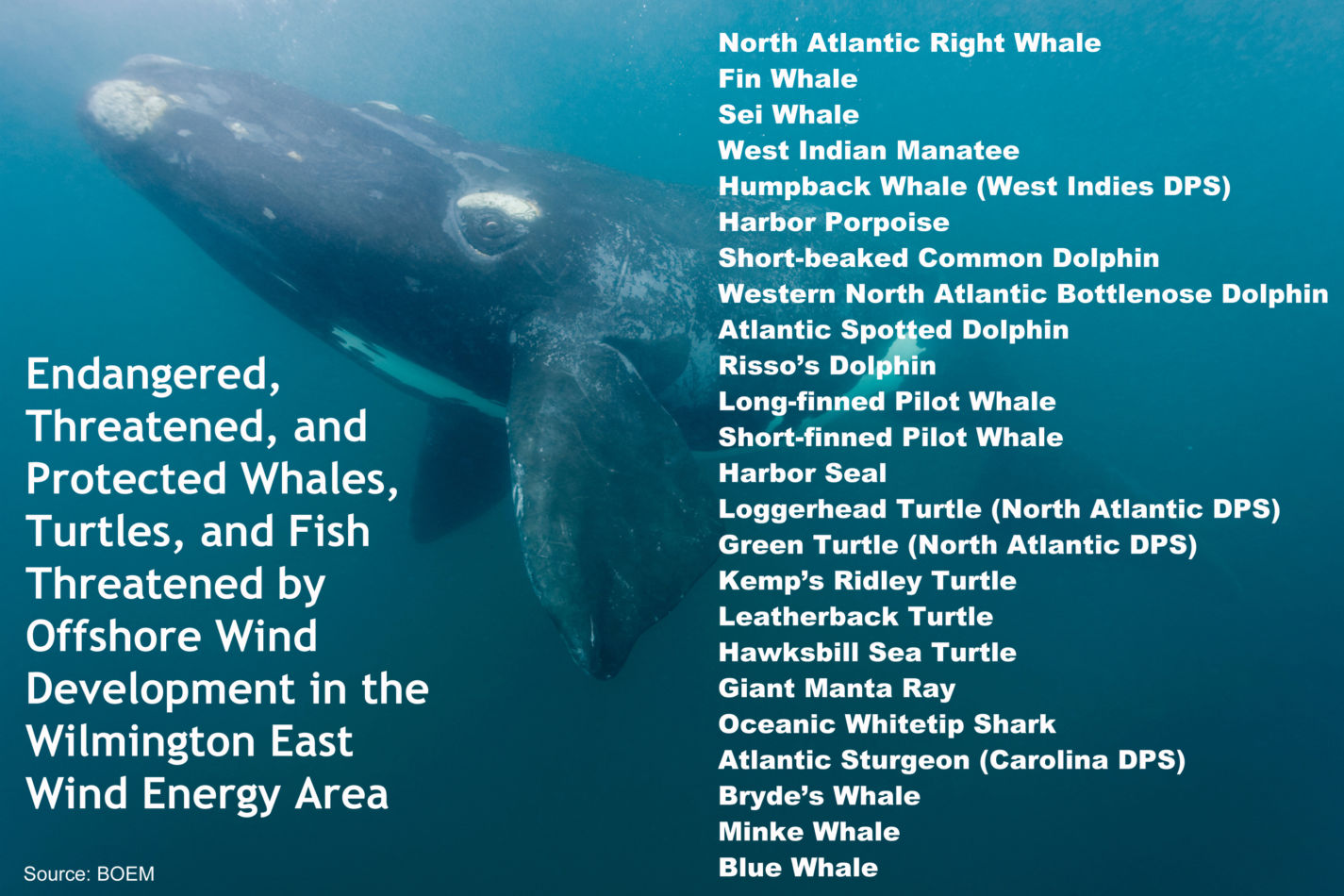- There has been little examination of the extent of the impacts of “environmentally friendly” offshore wind development on affected marine ecologies, habitats, fisheries, and wildlife
- A few studies attest to these negative effects from offshore wind facilities, including population impacts and habitat disruption from site selection, construction, pile driving, and operational noise
- The waters off the coast of North Carolina are host to many endangered, threatened, and federally protected whales, turtles, fish, and avian species that would be put at risk by offshore wind facilities
Despite its political appeal, offshore wind energy development would cost thousands upon thousands of jobs, hike electricity rates, worsen energy poverty, but not even put a dent in worldwide CO2 emissions. It would also harbor several other bad effects for states that incentivize and encourage it, as discussed in a recent report from the Center for Food, Power, and Life (CFPL) at the John Locke Foundation.
This research brief will discuss yet another significant environmental and ecological threat posed by offshore wind energy development. While it is being heavily promoted and presented to the public as planet-friendly, there has been little examination of the extent of their impacts on affected marine ecologies, habitats, fisheries, gulls, seabirds, other airborne creatures, whales, turtles, shellfish, as well as migratory birds and marine life. They will also impact numerous threatened and endangered species, including the North Atlantic Right Whale and Loggerhead Turtle.
Threats to endangered, threatened, and protected whales, turtles, and fish
A few studies attest to negative effects on many different fish and mammal populations from offshore wind facilities, from construction to operation. They include population impacts and habitat disruption from site selection, construction, pile driving, and operational noise. (See endnotes 72 and 73 from the CFPL report.)
According to the federal Bureau of Ocean Energy Management, the Wilmington East wind energy area contains several endangered, threatened, and protected species year-round. Those include many species of whales and fish: the North Atlantic Right Whales, Fin Whales, Western North Atlantic Bottlenose Dolphins, Atlantic Spotted Dolphins, Risso’s Dolphins, Long-Finned Pilot Whales, Short-Finned Pilot Whales, Giant Manta Ray Mantas, Oceanic Whitetip Sharks, and Atlantic Sturgeons. They also include numerous species of turtles: Loggerhead Turtles, Green Turtles, Kemp’s Ridley Turtles, Leatherback Turtles, and Hawksbill Sea Turtles. Several other endangered, threatened, and protected species make seasonal visits to or are occasionally seen in the area.
The following graph lists the endangered, threatened, and protected species and marine mammals that would be threatened by development in the Wilmington East wind energy area, for which leases were recently rushed approval. For an understanding of how big and close this wind energy area is, consider: it is 15 nautical miles off the coast of Bald Head Island (well within the viewshed) and encompasses an area more than three times the City of Wilmington.
Endangered, Threatened, and Protected Whales, Turtles, and Fish Threatened by Offshore Wind Development in the Wilmington East Wind Energy Area

Threats to seabirds, gulls, and endangered migratory birds
Turbines from offshore wind facilities threaten avian species. Onshore wind energy facilities are already notorious for slaughter of birds and bats, and the same dynamic is expected for offshore wind. One worrisome difference is that, while it is possible to survey and make rough estimates of how many birds, bats, endangered eagles, and other avian species are “taken” by onshore turbine blades, there is no way to count the carcasses of dead birds dropped in the ocean.
Turbines off the coast of North Carolina may pose a far-reaching threat to avian species, since they will not only impact local seabirds but also migratory birds. For example, in 2017 a coalition of bird and wildlife conservation groups wrote to officials at BOEM, the National Marine Fisheries Service, and the U.S. Fish and Wildlife Service urging that mitigation strategies, wildlife surveys, EIS’s, and other measures be put in place to protect the endangered Roseate Terns, which migrate “the entire length of the eastern seaboard,” including the waters off North Carolina, and “also forage in coastal waters, sometimes venturing many miles offshore to feed their developing chicks.”
North Carolina is also home to the endangered Piping Plovers. According to Audubon NC, “North Carolina is the only state where Piping Plovers are found as both breeding and wintering birds – meaning they inhabit the coast year-round!”
Conclusion
The waters off the coast of North Carolina are host to many endangered, threatened, and federally protected whales, turtles, fish, and avian species. They face significant negative impacts from offshore wind energy development. How big of a threat they face has, however, received only limited study.
These waters also include sensitive and very important fishing habitats. The extent of a massive buildout of offshore wind facilities into those habitats has also received scant study in the political rush to lease and install these enormously expensive sources of unreliable electricity. The subsequent impacts on coastal communities’ fishing industry is unknown and barely talked about outside those communities. The CFPL report on offshore wind delves into that issue among many others.


